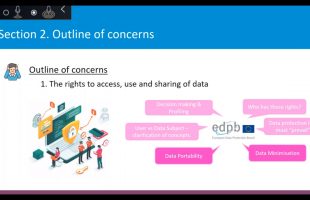Web 3 represents the evolution of technology and data, disrupting the next generation of financial services across the globe.
We take a closer look at how NFTs, in particular, offer credible utility in financial services, that could help revolutionise the concept of asset ownership, accessibility and distribution of data, and the branding strength of an organisation.
There are several marketplaces that have popped up around NFTs, allowing people to buy and sell both physical, as well as digital assets. But how is this relevant to financial services? To answer that, we need to start by decoupling trends and fads driven by popular culture from the real technical and functional features of NFTs.
If you Google NFTs, you’re likely to be presented with a myriad of collections, such as The Bored Ape Yacht Club, Crypto punks larva labs, and many more. The success of some of the most popular NFTs are often fuelled by social media micro trends and campaigns. Some are even backed with quite frankly super impressive UX/UI that create unique digital consumer experiences.
Most mainstream NFTs take a variety of forms, predominantly in industries such as entertainment, fashion or art for example. Big winners in the NFT game could range from big sports brands, such as the NFL, right through to small creators. The possibilities are endless, especially as more consumers put their money and trust into NFTs.
Stripping back the fancy shiny stuff and focussing on the real technical functionality that NFTs have to offer, gets us closer to understanding how they can be applied to financial services.
The underpinning technology behind NFTs being blockchain and the DLT, are key enablers of the unique digitally coded tokens. Because of this, physical and digital assets can be represented in token form where the certification of ownership is guaranteed, the distribution of tokens are logged onto a ledger that provides an ultimate record and traceability of ownership.
Settlement of transactions on NFT exchange platforms are instant, fast and efficient. And the non-fungible part means that the asset remains unique when in circulation. The technology can also apply smart contracts, which automatically execute predefined agreements whenever an NFT is exchanged. These could be stipulations tied into unique licensing agreements or royalty payments that get paid every time an NFT transaction is honoured.
When we look at NFTs from a technical lens, rather than in the context of a Bored Ape, we could start to consider design principles where NFTs could support new financial products and services, improve operational efficiency or enhance branding and loyalty.
Industry adopters such as Loanswap recently minted the first ever mortgage NFT. FlowCarbon are tokenising carbon credits and JP Morgan are trialling their own private blockchain to trade tokenised cash deposits via Onyx Digital Assets. There is also interest in how NFTs could represent stocks, bonds, security backed transactions and alternative assets, like watches or wine.
NFTs are a potential way to represent financial products but also to help with operational problems too. Take loan origination and KYC processes. It would be much easier to aggregate data and share it if it was all sat on an NFT. If I share with my bank an NFT, which is a certificate proving who I am as well as what financial products I have, this could speed up processing, reduce processing fees and deliver better customer satisfaction.
Then imagine if all my banking rewards and loyalty points were set up via an NFT. As a next generation banking customer, I’d love my bank to adopt these emerging technologies, as they’d remain a clear choice for me on where I choose to keep my money and give me more reasons to interact with my bank. I wouldn’t need to turn to another solution.
Perhaps NFTs are just a new way to solve old problems. Business models haven’t necessarily changed, the tech just got more interesting. Financial institutions need to be thinking about what the right solution is for them to remain competitive, and not get left behind. The key is to consider future designs of NFTs, or other Web 3 innovations, that could help solve real problems faced in financial services. Financial institutions will need to think about how they enable future strategies to drive growth, scalability, and defensibility in a market where the consumer is evolving with or without them.
To find out more, check out our latest insights on Baringa’s website: https://www.baringa.com/en/insights-news/trending/web-3/











































































































































































































































































